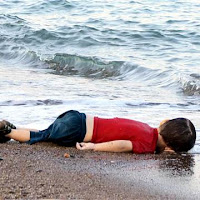Health organizations in particular are justifiably guarded about partnerships and reputational risks, particularly as they connect to practices that, when pursued in excess, can be hazardous to health. Here are two interesting examples of non-profit health organizations partnering with beverage companies to support viral campaigns to reach wider audiences than existing adherents.
In the old days of social media - 2011 - a mistweet by a member of the American Red Cross social media team proclaimed joy at finding supplies of Dogfish Head Brewery's craft beer. Headed home from teaching a Zumba class and looking forward to a quiet dinner with her husband, the woman accidentally posted on the American Red Cross account instead of on her personal account.
The error was well- and immediately managed by the team lead who deleted the tweet and replaced it with the quip, "We've deleted the rogue tweet but rest assured the Red Cross is sober and we've confiscated the keys." I remember talking with my colleague, who was worried about career and organizational damage the following day, and reflecting on the balanced and reasonable leadership. (Her career is thriving.)
In the social world, tweets live forever. The Brewery's followers and the social media manager picked up the tweet and, taken with the humane and humorous replacement tweet, started a fundraising campaign and donation drive: "'Show us you donated a pint @redcross today & we'll buy you a pint of @dogfishbeer #gettngslizzerd'".* The way the issue was handled and the quick thinking of both the brewery and the Red Cross turned this campaign into a highly successful marketing and fundraising activity.
 Gin drinkers often cheekily cite malaria prevention when taking part in their favourite tipple. Centuries ago, a British colonial officer in India found that adding gin to the tonic water that contained antimalarial quinine was a lovely way to make the medicine go down. While modern medicine has much more effective preventive and treatment options for malaria, and one would have to drink gallons of modern tonic water to ingest sufficient quinine, tonic maker Fever Tree has found a way to make a more effective - yet equally delightful - contribution to the modern malaria fight.
Gin drinkers often cheekily cite malaria prevention when taking part in their favourite tipple. Centuries ago, a British colonial officer in India found that adding gin to the tonic water that contained antimalarial quinine was a lovely way to make the medicine go down. While modern medicine has much more effective preventive and treatment options for malaria, and one would have to drink gallons of modern tonic water to ingest sufficient quinine, tonic maker Fever Tree has found a way to make a more effective - yet equally delightful - contribution to the modern malaria fight.Malaria remains a deadly and debilitating disease, and the WHO Africa Region bears 90% of the global death and disease burden. In 2016, nearly half of the world's population was at risk of malaria. The amazing part is that malaria is treatable and preventable. With the coordinated efforts of global partners and sufficient funds to prevent, diagnose, treat, and support research and development, this disease can be eliminated.
Partnering with Malaria No More UK on their #MalariaMustDie campaign, Fever Tree will donate £5 to the non-profit organization for every Twitter and Instagram 'Cheers!' post in April, tagged with #MalariaMustDie. Surely, you can add evidence that inventive and creative campaigns + new partners + social media = viral good.
You can wait till World Malaria Day on 25 April or simply raise a glass tonight to say 'Cheers! I believe that #MalariaMustDie'. I'm happy to join you... in the name of research, of course.
I currently am researching effectiveness of international humanitarian advocacy campaigns. If you have examples to share or reflections on campaigns in which you have been involved, please leave a comment.
* Blood donors should abstain from consuming alcohol immediately before and after giving blood. Follow all medical advice.
* Alcohol should be consumed responsibly and in moderation.


